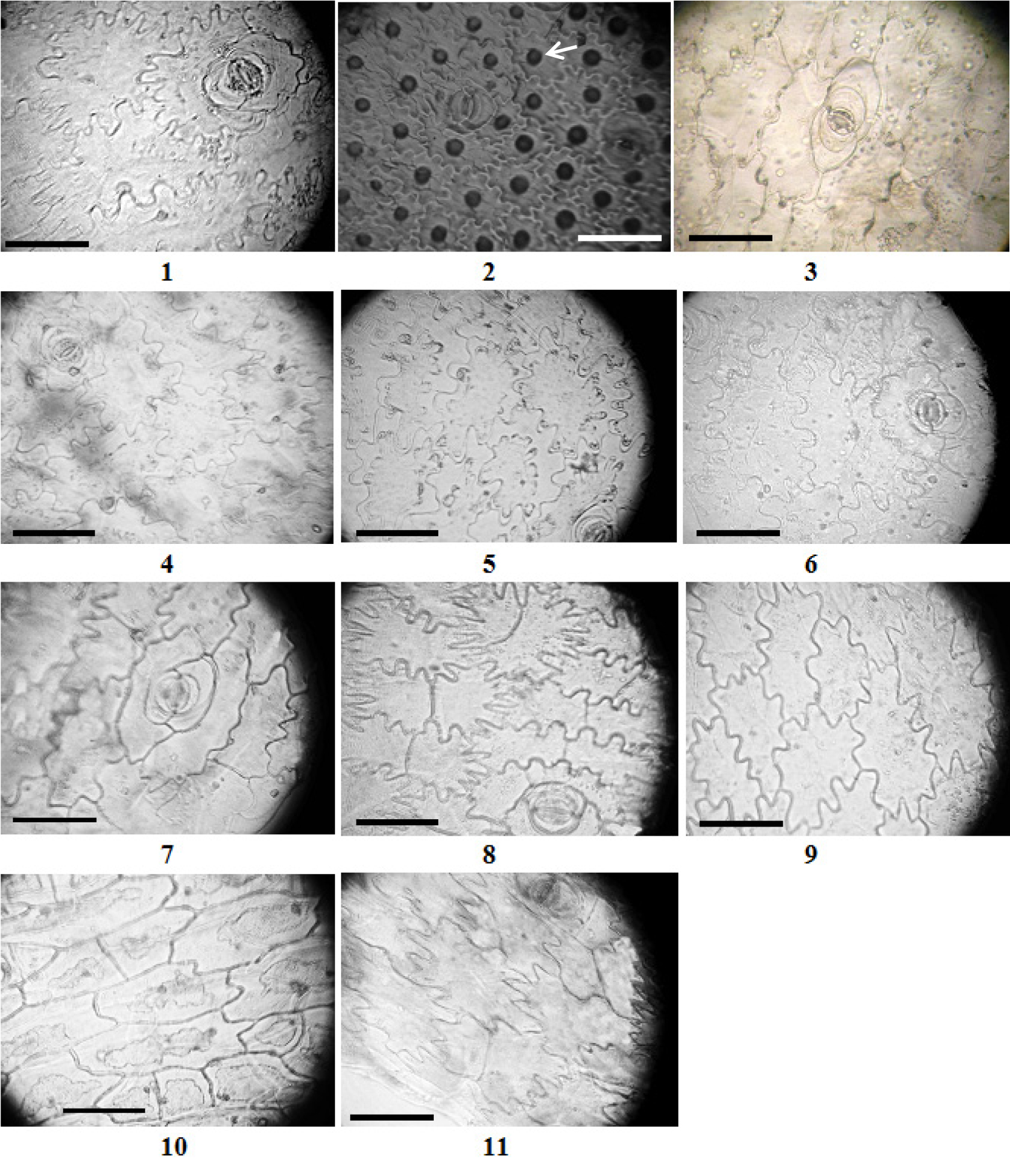Epidermal characteristics in some representatives of Cactoideae (Cactaceae)
Abstract
In this paper we analyzed the epidermis of 6-month old representatives of 11 species of the subfamily Cactoideae. The epidermal cells of examined species have sprawled and elongated projections with a sinuous outlines. Most of plants have large epidermal cells, whose number per unit area considerably varies. Stomatal index of the studied species is small and very small. Size of stomata is variation of 32,5±0,5×24,9±0,7 in Astrophytum myriostigma to 43,2±0,6×36,1±0,5 in Rebutia flavistyla. Large stomata are typical for three species of cacti. All examined species have paracytic stomata. The small prismatic crystals are in epidermal cells of three species. Astrophytum myriostigma and Mammillaria prolifera have papillaes and trichomes on the surface.
References
Васильев Б.Р. 1988. Строение листа древесных растений различных климатических зон. Издательство Ленинградского ун-та, Ленинград.
Захаревич С.Ф. 1954. К методике описания эпидермиса листа. Вестник Ленинградского ун-та 4: 65–75.
Калашник С., Нужина Н., Гайдаржи М. 2009. Особливості продихового апарату епідерми сукулентних рослин роду Euphorbia L. (Euphorbiaceae). Вісник КНУ ім. Т. Шевченка 18: 47–50.
Паушева З.П. 1988. Практикум по цитологии растений. Агропромиздат, Mосква.
Darling M.S. 1989. Epidermis and hypodermis of the saguaro cactus (Cereus giganteus): anatomy and spectral properties. Am. J. Bot. 76: 1698–1706.
Eggli U. 1984. Stomatal types of Cactaceae. Plant Syst. Evol. 146: 197–214.
Metcalfe C.R., Chalk L. 1979. Anatomy of the dicotyledons. Clarendon Press, Oxford.
Secorun A.C., de Souza L.A. 2011. Morphology and anatomy of Rhipsalis cereuscula, Rhipsalis floccosa subsp. hohenauensis and Lepismium cruciforme (Cactaceae) seedlings. Revista Mexicana de Biodiversidad 82: 131–143.
Soffiatti P., Angyalossy V. 2007. Anatomy of Brazilian Cereeae (subfamily Cactoideae, Cactaceae): Arrojadoa Britton & Rose, Stephanocereus A. Berger and Brasilicereus Backeberg. Acta Bot. Bras. 21: 813–822.
Janu V., Raghuvanshi R.K. 2011. Microscopic studies on epidermal cells and stomatal behavior of some globular cacti (Mammillaria spp.). Insight Botany 1: 1–4.


This work is licensed under a Creative Commons Attribution-NonCommercial-NoDerivatives 4.0 International License.
The journal is licensed by Creative Commons under BY-NC-ND license. You are welcome and free to share (copy and redistribute the material in any medium or format) all the published materials. You may not use the material for commercial purposes. You must give appropriate credit to all published materials.
The journal allow the author(s) to hold the copyrights and to retain publishing rights without any restrictions. This is also indicated at the bottom of each article.





